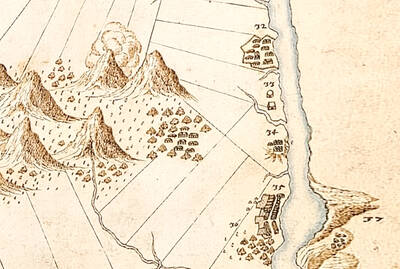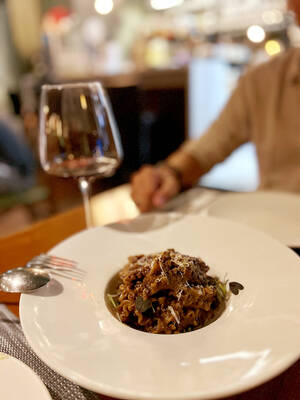Rwanda’s rapidly dwindling Twa pygmies, considered the original inhabitants of this central African nation, now live on the fringes, facing squalor, discrimination and general exclusion.
A small community eking out a frugal living on the flank of an impossibly steep hill in Bwiza in the center of the country embodies the problems they face in post-genocide Rwanda.
Bwiza’s residents came to look for a field, having lost the land their families owned decades back.
They are plagued by alcoholism, lose up to two children for every one born and have little or no access to healthcare.
“A lot of children die. I used to have nine, now I have three,” said Jowas Gasinzigwa, leaning on a crude walking stick.
There are 46 families and just 50 children in the hamlet, 15 of whom attend school. All this in a country where most women produce five or six children.
I now have three and I used to have six,” said Celestin Uwimana, 38. “Many die of malaria because they don’t go to hospital when they have it. Others get meningitis.”
The nearest health center is a two-hour walk away. The pygmies live in leaf huts and respiratory diseases are a major scourge due to leaky roofs and damp.
Zephirin Kalimba, the head of an organization that helps Twa communities through development projects, says they make up between 33,000 and 35,000 of Rwanda’s 10 million people.
Whereas the overall population of Rwanda is on the rise, the number of pygmies is declining, a development likely linked to their displacement from their original forest lands and the end of their traditional hunter-gatherer lifestyle.
Though Twa used to own land, more than 40 percent of Twa households in Rwanda are today landless. They were forced out of forests that were turned into natural parks. It was only after eviction from their ancestral land that they turned to farming in fits and starts.
In Bwiza, the men, in gumboots or plastic sandals, sit in the shade complaining. It is the women who hoe a nearby field belonging to a Twa widow who inherited it from her late non-Twa husband, babies strapped to their backs in the blazing sun.
Both groups occasionally burst into laughter, start dancing and make up a song as they go along: about how “the minister said the Twa need iron sheets for the roofs of their houses” and how “Rwanda has many doctors, but none near Twa villages.”
Kalimba said the community should be afforded benefits given to handicapped people or women in Rwanda. Instead, the Twa are practically excluded from government poverty alleviation measures, he claimed.
The pygmies even had to change the name of their organization, the Community of Indigenous Rwandans, as the government argued that identification along ethnic lines contributed to the 1994 genocide that killed some 800,000 people.
The first recorded reference to pygmies appears to be in a letter written in 2276 BC by the boy pharaoh Pepi II. More recently the French American explorer Paul du Chaillu wrote at length about his encounter with pygmies in the rainforests of Gabon in 1867.
But their short stature has long set them apart, and at times seen them stigmatized. Pygmies were on occasion displayed in zoos or circuses as curiosities and are often considered in their native Africa as either sub-human or possessed with special powers.
The present day Twa try to eke out a living from casual labor and pottery.
When the Twa, who are also found in neighboring Burundi, Democratic Republic of Congo and Uganda, can get work it is usually on their neighbors’ land and the pay is a pittance.
They complain of persecution both at work and in school.
“If we go to look for labor where someone is building a house, they’ll only take us if there are no non-Twa workers,” Uwimana said.
“When we earn some money cultivating a communal field ... and we try to put it into the bank, we go to the bank counter and they say, ‘Ha, you’re a Twa’ and refuse to open an account,” he added.
In despair, some of them have turned to drink.
Asked if the same holds true in schools, 14-year-old Justin Nzabandora said the main reason Twa children so often drop out of school is because “they get tired of having other children point to them saying ‘look it’s a Twa.’”

Last week gave us the droll little comedy of People’s Republic of China’s (PRC) consul general in Osaka posting a threat on X in response to Japanese Prime Minister Sanae Takaichi saying to the Diet that a Chinese attack on Taiwan may be an “existential threat” to Japan. That would allow Japanese Self Defence Forces to respond militarily. The PRC representative then said that if a “filthy neck sticks itself in uninvited, we will cut it off without a moment’s hesitation. Are you prepared for that?” This was widely, and probably deliberately, construed as a threat to behead Takaichi, though it

Nov. 17 to Nov. 23 When Kanori Ino surveyed Taipei’s Indigenous settlements in 1896, he found a culture that was fading. Although there was still a “clear line of distinction” between the Ketagalan people and the neighboring Han settlers that had been arriving over the previous 200 years, the former had largely adopted the customs and language of the latter. “Fortunately, some elders still remember their past customs and language. But if we do not hurry and record them now, future researchers will have nothing left but to weep amid the ruins of Indigenous settlements,” he wrote in the Journal of

Even after years in business, weekend tables here can be booked out a month in advance. The price point far exceeds its competitors. Granted, expectations are soaringly high, but something here failed to hit the high notes. There are a few telltale signs that a restaurant relies solely on outstanding food to create the experience, no gimmicks or distractions needed. La Mole is such a restaurant. The atmosphere is food-forward, with an open kitchen center stage. Our tables are simple; no candles, no dim lighting, no ambient music. The menu is brief, and our waiter directs most

If China attacks, will Taiwanese be willing to fight? Analysts of certain types obsess over questions like this, especially military analysts and those with an ax to grind as to whether Taiwan is worth defending, or should be cut loose to appease Beijing. Fellow columnist Michael Turton in “Notes from Central Taiwan: Willing to fight for the homeland” (Nov. 6, page 12) provides a superb analysis of this topic, how it is used and manipulated to political ends and what the underlying data shows. The problem is that most analysis is centered around polling data, which as Turton observes, “many of these